Minesweeper 247 - How to Play Minesweeper
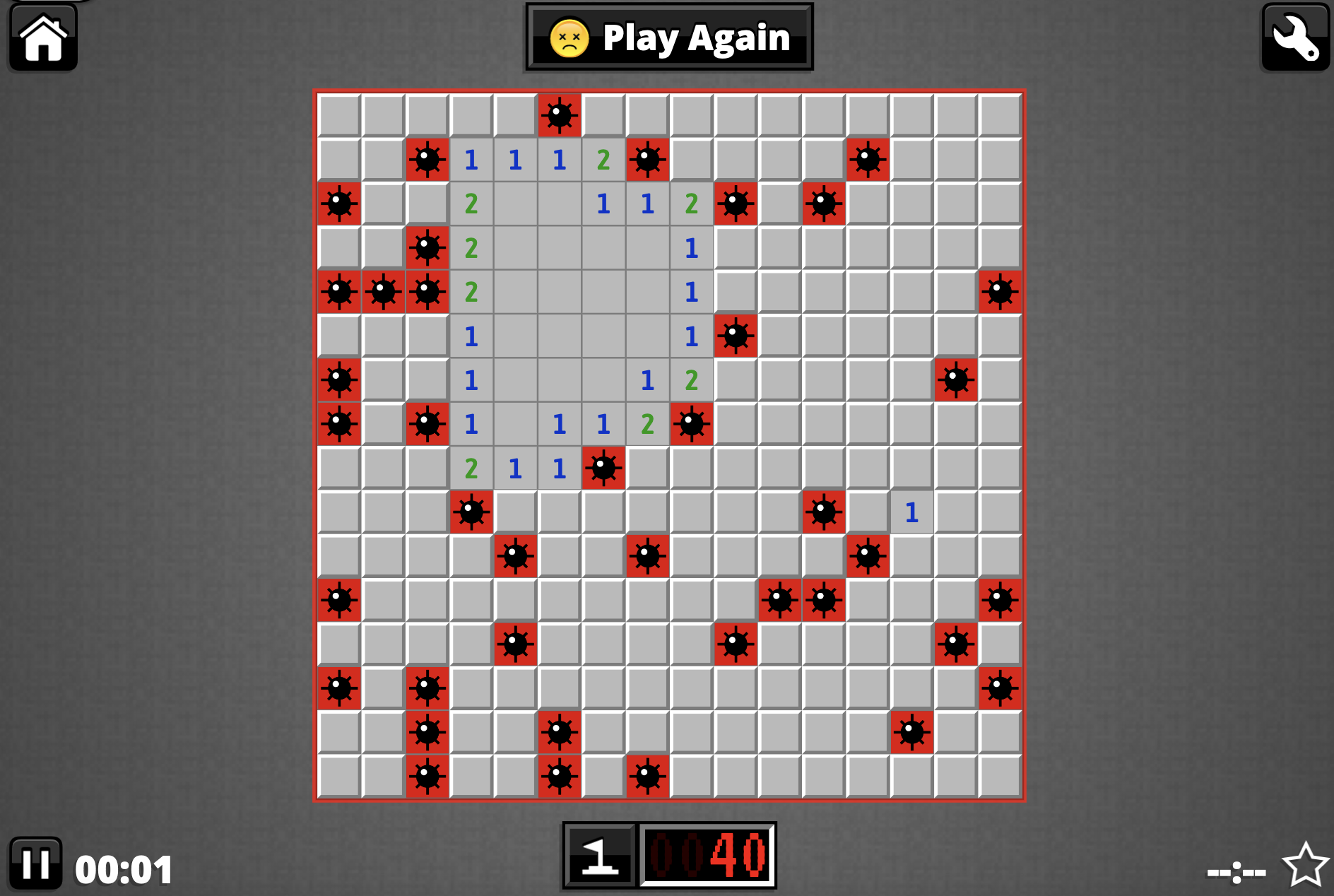
Minesweeper is one of the most commonly played video games of all time. Over the years, it has been played by hundreds of millions of players on PC, tablet, smartphone, and various other electrical devices. However, it is estimated that over 70% of people who open a Minesweeper game don’t actually know what they are doing.
In this guide on how to play Minesweeper, you will learn how to understand the game board as well as the rules and how to make moves on your path to seeing a sea of flags and proving yourself to be the king or queen of digital minefields.
Contents:
- A Brief History of Minesweeper
- How to Play Minesweeper: The Rules
- How to Play Minesweeper in 7 Steps
- How to Become a Better Minesweeper Player
- Stat Playing Minesweeper Now
A Brief History of Minesweeper
Minesweeper is a logic puzzle video game that was first released in 1990 courtesy of the Microsoft Entertainment Pack for Windows 3.1, although Ian Andrew’s Mined-Out for the ZX Spectrum introduced some of the fundamental features.
The Minesweeper game sees the player tasked with the job of sweeping a minefield by identifying the locations of various mines. Created by Robert Donner, Minesweeper was introduced partly to showcase the graphical user interface (GUI) of Microsoft Windows while also helping early personal computer users become familiar with using a click to move and click.
It has since been played by millions of plates from the Baby Boomer generation down to the Alpha Generation. A little more information on the history of Minesweeper can be found here.
How to Play Minesweeper: The Rules
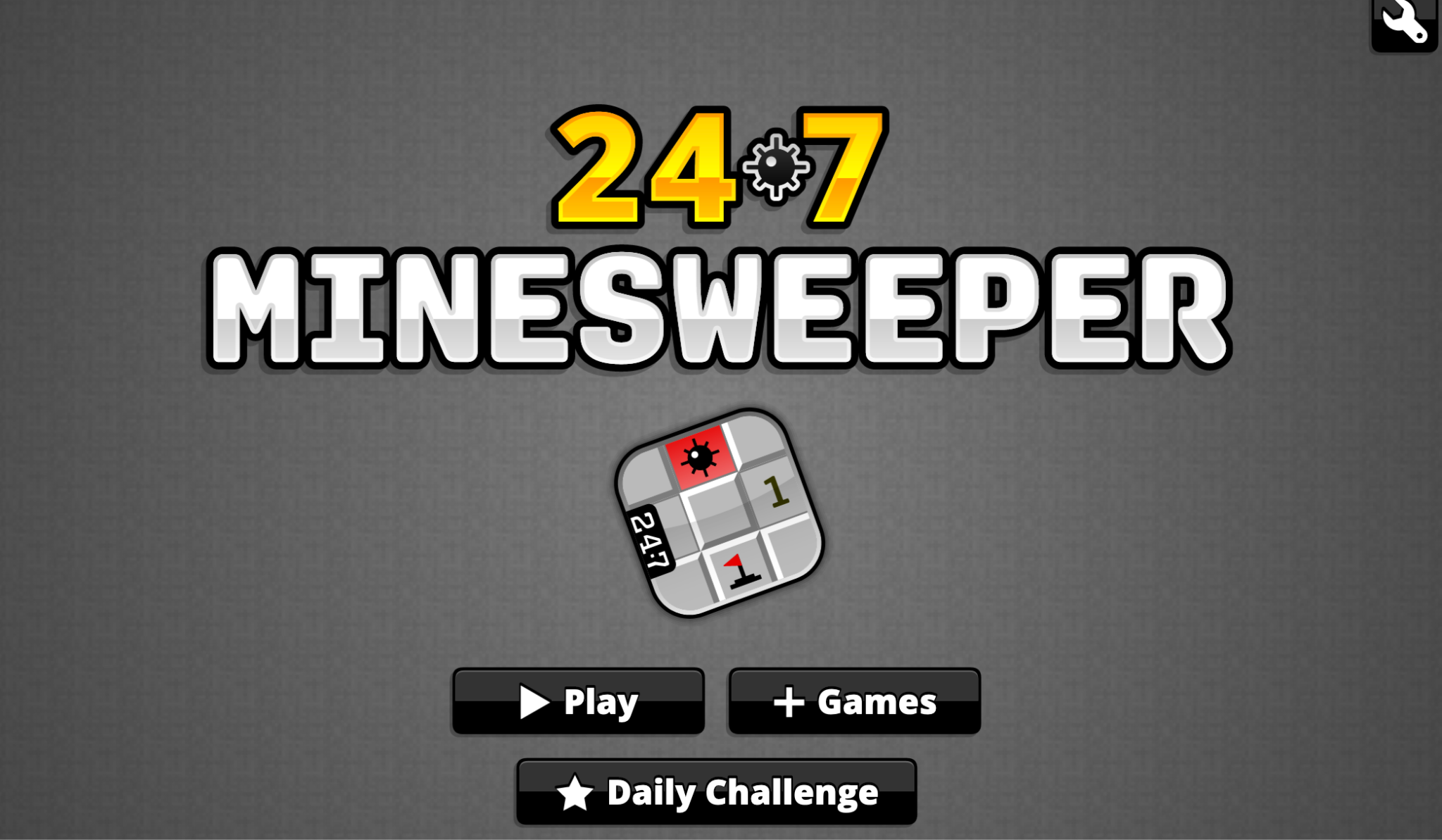
Minesweeper is considered an all-time classic of PC gaming but has also enjoyed a significant resurgence in recent years. The popularity can be attributed to many factors including nostalgia for older gamers, as well as its simple yet addictive nature for newer players.
The fact that each Minesweeper game is a standalone challenge that can be completed even when you only have a few minutes to kill also adds to the appeal in today’s fast-paced
world. Meanwhile, games like Minesweeper speedrunning add a competitive edge that has won over millions of younger players.
Before starting, though, it’s important to understand the point of the game and how you can beat it. Firstly the game board is a grid of square tiles, which represents a minefield. When you click one of the squares, your Minesweeper “digs” the plot to reveal one of the following;
- Blank space - an empty tile, which signals it’s safe.
- Number - a tile that shows a number from 1 to 8, showing that a mine is close by.
- Mine - these are the tiles you want to avoid.
So, how do you know where the mines are? That’s where logic and understanding how the other tiles work comes into play.
When a tile shows a number, it corresponds to the number of mines sitting adjacent to it. There is a maximum of eight tiles that could touch the tile you’ve selected. They are; the tile to the top left, the tile directly above, the tile to the top right, the tile to the left, the tile to the right, the tile to the bottom left, the tile directly below, and the tile to the bottom right.
If the tile shows a number 8, then every tile surrounding it is a mine. If the tile displays a number 1, however, only one of the adjacent squares hides a mine.
As well as turning over tiles without hitting a mine, players should plant a flag down on any tile that they suspect contains a mine.
The aim of the game is to plant flags to identify the location of each mine within the minefield (without planting plays on safe tiles or number tiles). The game is won when your flags are planted in the right position. However, if you click on a tile that contains a mine, the minefield blows up and it’s game over.
How to Play Minesweeper in 7 Steps
Playing Minesweeper is a game that offers players an array of benefits to players, especially if you enjoy it frequently. It’s great for improving your memory and motor skills while it’s also an ideal way to de-stress in a mentally stimulating way.
However, those rewards can only be enjoyed when you know how to play. Here’s how to do it in seven steps.
Step 1: Open a Minesweeper Game
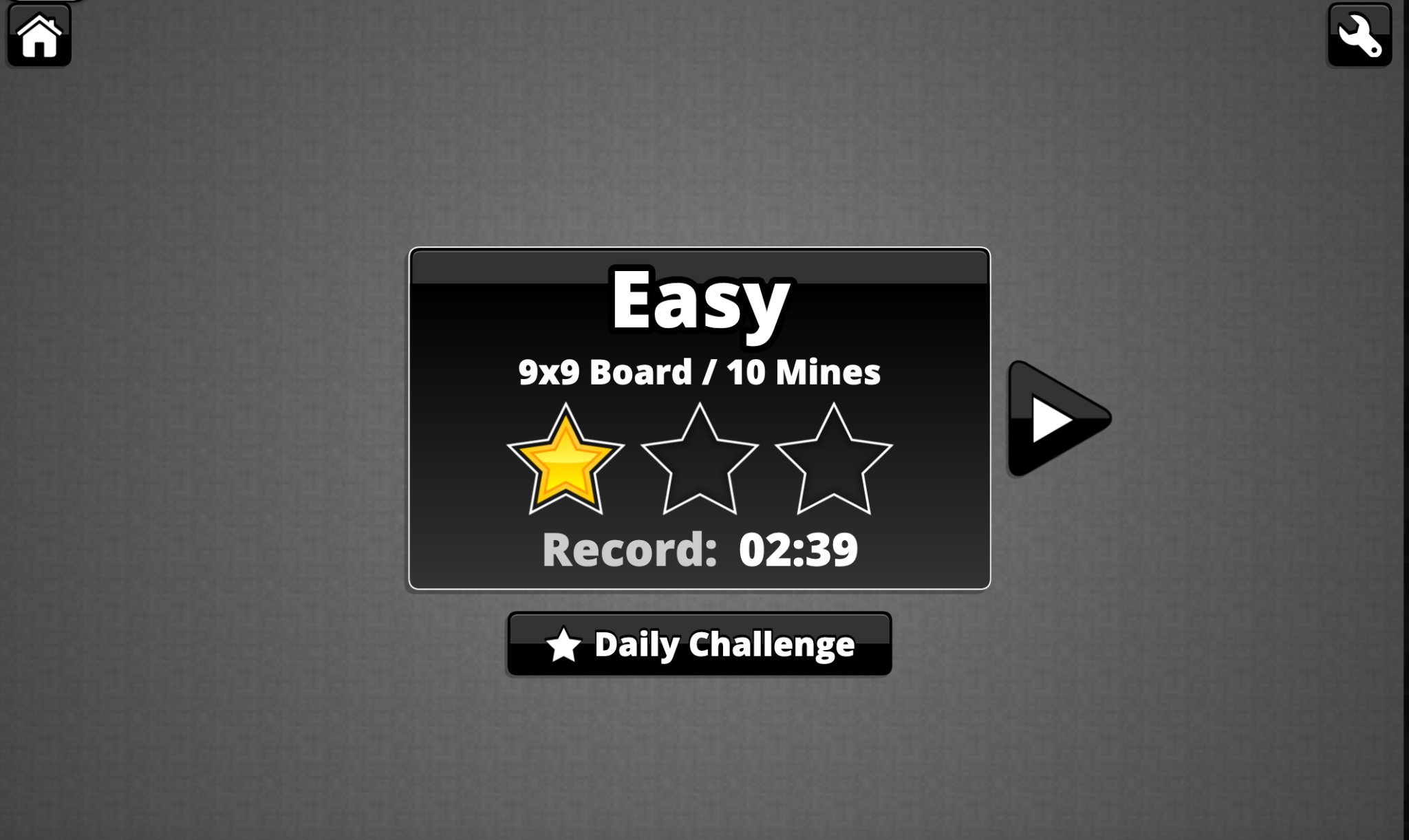
The first step to playing Minesweeper is to open the game. While Microsoft still hosts a version that can be downloaded, it is no longer the desktop staple that it was back in the 1990s. Therefore, the first step is to find a suitable provider of Minesweeper games.
Here at 247 Minesweeper, you will find a free Flash version of the game that can be played on any browser. Impressive graphics, responsible gameplay, easy controls, and the option to include fun sounds make for an enjoyable minesweeping experience. Meanwhile, the following game modes provide something for beginners to seasoned players alike;
- Easy mode: 9x9 board (81 tiles) featuring 10 mines.
- Medium mode: 16x16 board (256 tiles) featuring 40 mines.
- Hard mode: 24x16 board (384 tiles) featuring 70 mines.
- Expert mode: 30x16 board (380 tiles) featuring 99 mines.
The above board sizes are the same as used in competitive games, making 247 Minesweeper a great choice for serious players as well as casuals. After clicking ‘Play’ from the home screen, you can navigate from ‘Easy’ to harder modes using the right arrow (see pic above).
There is also a Daily Challenge mode in which a predetermined minesweeper game in which some tiles have already been turned will open. This is a time attack game, providing players the chance to see how they fare against others from around the world.
Step 2: Understand the Minefield Elements
When playing a Minesweeper game, you should familiarize yourself with the on-screen elements. The fundamentals of the game board will be the same across all platforms but some features, as well as the appearance, do vary.
When opening a game at 247 Minesweeper, you will see the following - note this is on easy mode, the board naturally has more squares on the other modes as described above:
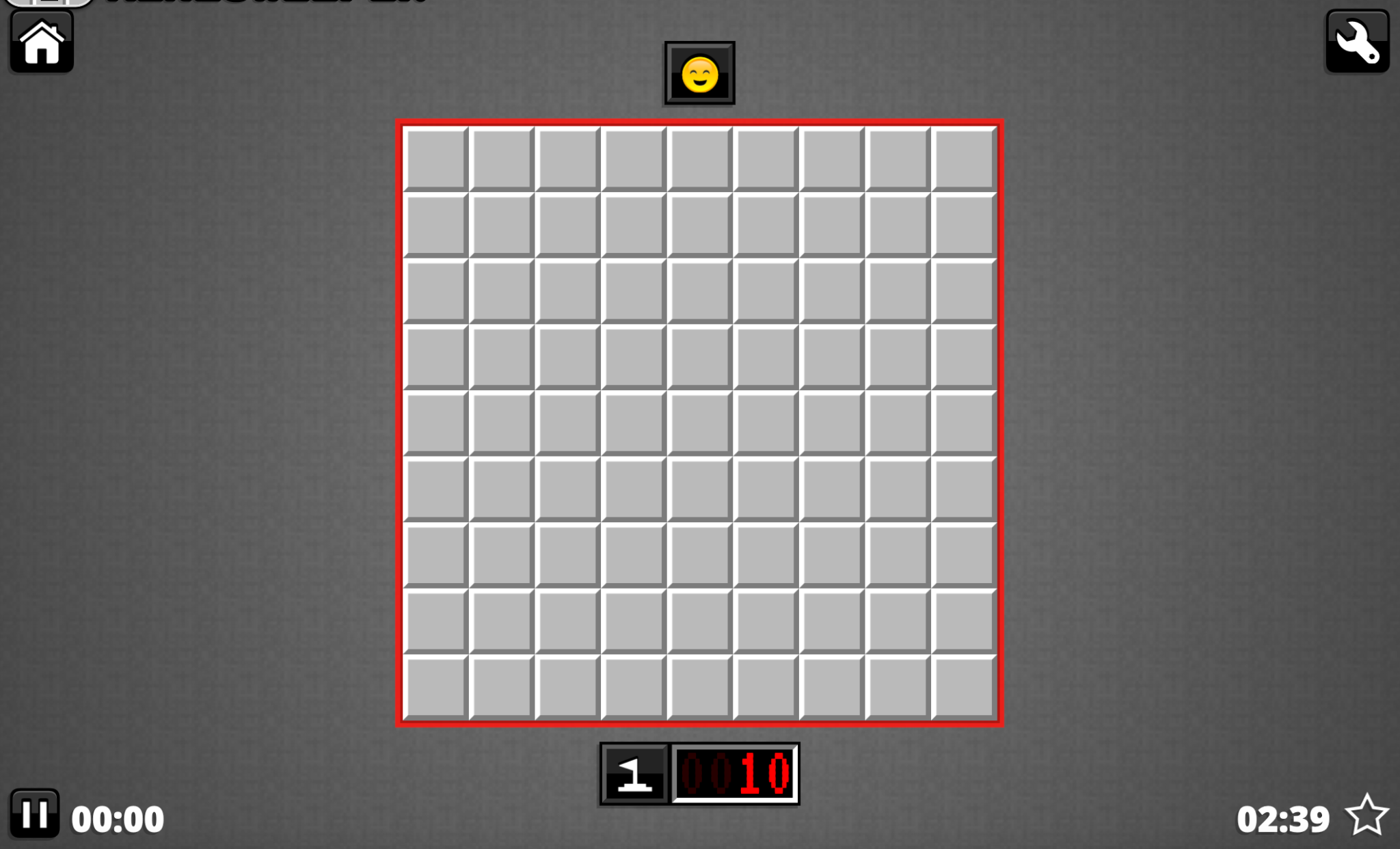
- The home icon (top left) will take you back to the home screen.
- At the bottom left, you will see a timer that highlights how long you’ve played this specific game.
- Clicking the pause icon will pause the timer but also hide the minefield (to stop people from cheating a speedrun).
- The bottom right time shows your quickest time on that specific difficulty setting.
- In the top right, the settings icon will take you to a page where you can toggle sounds on/off and rotate the minefield. You may also read the instructions box to go over the rules once more.
- At the top of the game, clicking the smiley face icon will reset the game (changing the mine locations).
- The minefield is the box of squares (9x9 in this case) in which each individual tile can be clicked.
- At the bottom, a flag icon allows you to switch from ‘digging’ to ‘planting flags’.
- The number in the display box next to the flag icon indicates how many flags you have left to plant.
Step 3: Know the Commands
The rules of a Minesweeper game are the same regardless of where you play it. However, the way that you “dig” and plant flags may differ slightly from one game developer to the next.
Here at 247 Minesweeper, the controls could not be simpler. You “dig” a square by clicking it. To plant a flag, you simply click the flag icon at the bottom of the screen. You can tell that it is turned on because there will be a green border surrounding the minefield while the text box that tells you how many flags you have to plant also turns green (see pic).
To remove a flag (because you accidentally clicked a wrong square or have changed your mind), simply click it again. When you want to turn off the flag planting mode, simply click the flag icon at the bottom once more.
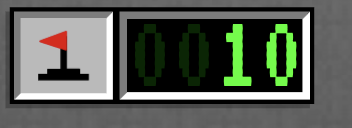
Step 4: Finding Your First Mine
In this example, we’ll look at a 9x9 game for simplicity. Ultimately, though, the fundamentals will be the same regardless of which difficulty you play.
Minesweeper is designed so that the first click will not land on a mine. So, when the game has started, you can click anywhere. However, it makes sense to start in a central area. This will leave you with a game that looks something like this:
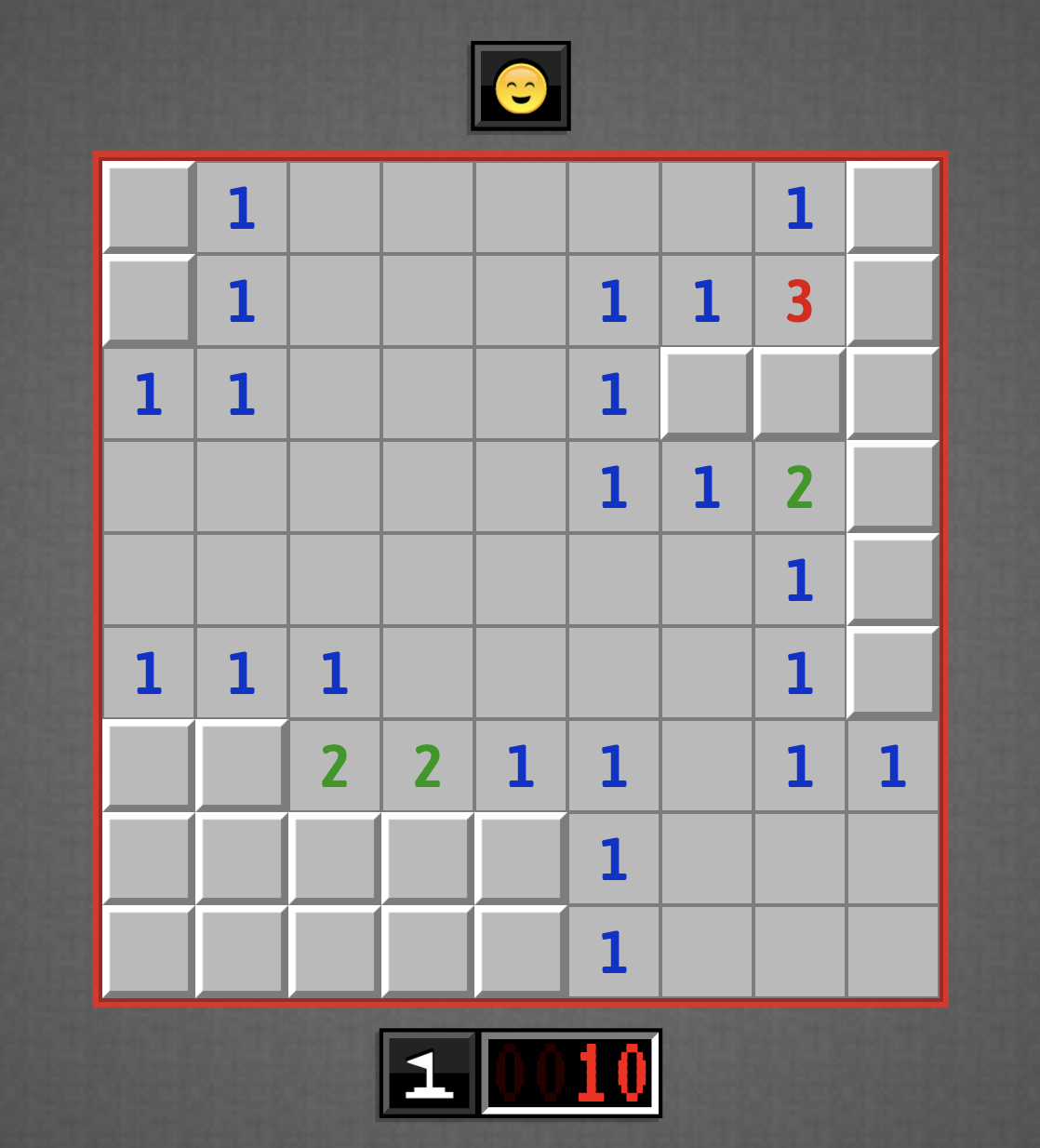
From here, it should be fairly easy to identify your first mine. If we look at the top left section of the screen, there are two tiles left for you to “dig” while the numbers indicate that only one of them contains a mine.
In this instance, the two 1s shown in row three of the minefield can only touch the box in row two. Therefore, this tile must contain the mine. Meanwhile, the two 1s shown in row one and row two can touch both of the available tiles. Therefore, we can deduce that the tile in row one is safe.
Having done this, the player can dig the box in row one, and plant a flag on the tile in row two. In turn, this section of the minefield will look like this:
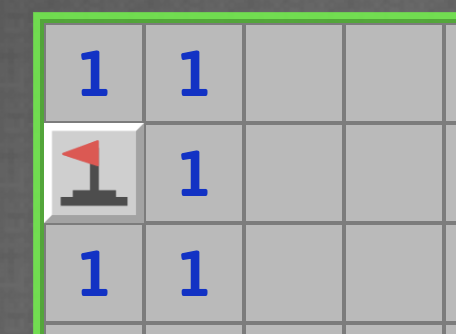
Step 5: Clearing Other Guaranteed Mines
Using the same game from step four, there are further mines that can be solved very quickly. Firstly, if we look at the cluster of four 1s that make an ‘L’ shape on the right side of the minefield, we can see that the two on row seven can only reach the tile on row six.
This means that the one on row six must be a mine while the tile on row five must be safe (as a result of the 1s in rows five and six that are already touching the mine). As such, the player can plant a flag and dig the box above it.
Similarly, the five 1s that have created a C around a tile in row three confirm that this box must be a mine. The player can plant a flag on this square. It also means that the square next to it can be clicked due to the 1s that are adjacent to it. This leaves us with the following grid:
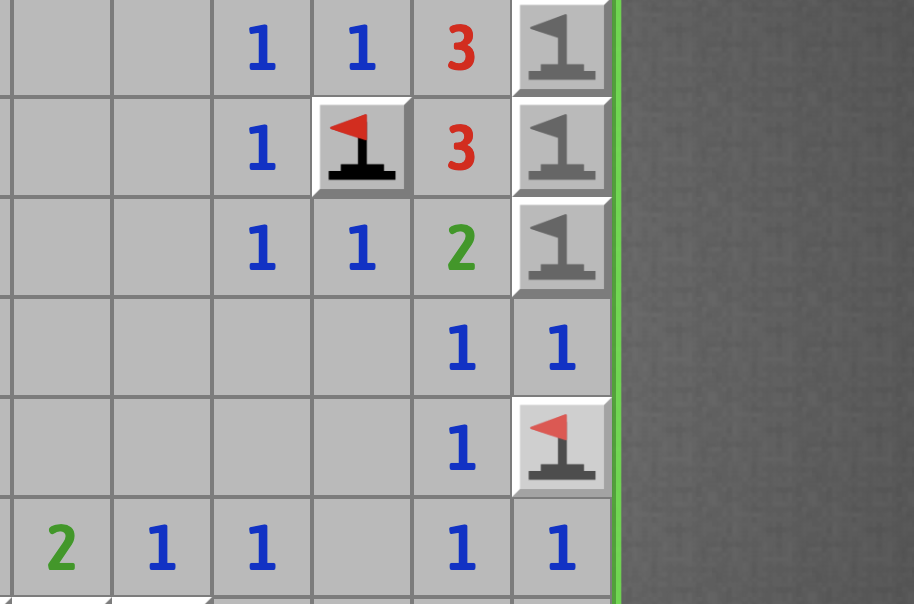
Step 6: Using Strategy to Clear More Mines
Now that we have the above minefield, we can strategically solve the three remaining spaces in the area.
The two 3s are already touching one flag, meaning that only two of the three remaining tiles are mines. Meanwhile, there are two 1s that already touch a flag, which means the remaining tile that they touch cannot be a mine.
When we click that box, it also means that the green 2 now only touches two boxes (including 1 flag) while the two red 3s touch three boxes (including 1 flag). This lines up to show that those two remaining boxes are mines and the player can plant flags on them.
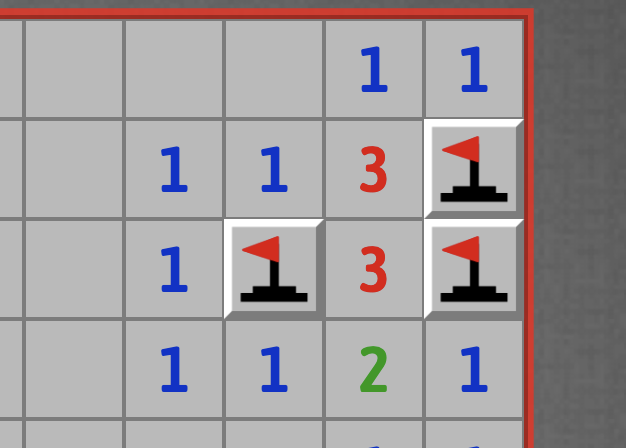
This leaves us with the bottom left area of the minefield to clear, along with the fact that there are five remaining mines.
There is a blue 1 that only touches one box (located in row seven), which means that box must be a mine. After placing a flag here, it subsequently means that the first box in row seven is safe as a result of the 1s in row six already touching a flag.
Having played this, it is now possible to clear both of the first two boxes in row eight. This leaves us with the following section:
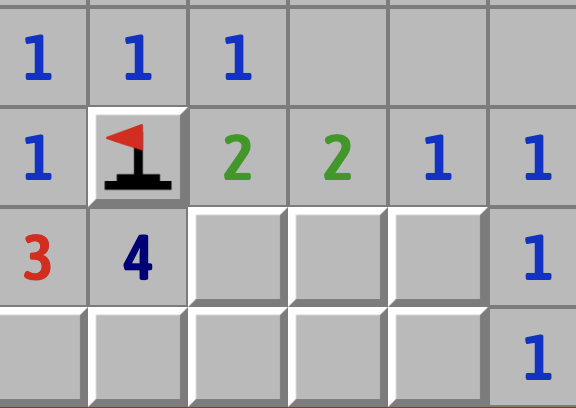
The red 3 only touches three boxes (excluding other numbers) including the flag that has already been planted. As such, the two adjacent boxes on row nine are mines.
Meanwhile, the four ones to the right of this section can help find the next mine. The top right of those four 1s only touches one box (located in row eight), which must be a mine. After planting the flag, the box directly under it may be safely clicked.
It leaves us with four remaining boxes and one flag to plant, as shown:
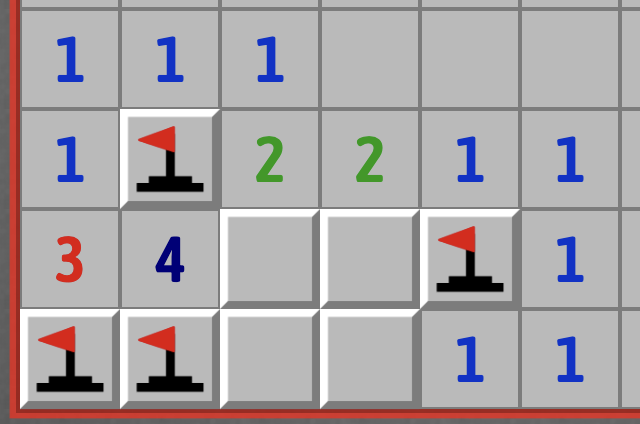
The blue ones above and below the flag that has just been placed show that the two boxes adjacent to this flag are safe. When clicking those, two more green 2s are revealed.
Now, the first green 2 in row seven is the key to deciding which of the final two boxes should be clicked. It only touches two boxes, including one flag that has already been planted. Therefore, we know that the box in row eight is the mine.
This will also mean that the second green 2 touches two mines while the purple 4 will be surrounded by four mines. Perfect.
Step 7: Recognize Patterns
As you play Minesweeper, you should also begin to recognize patterns that help you solve games quickly. Let’s look at the following grid:
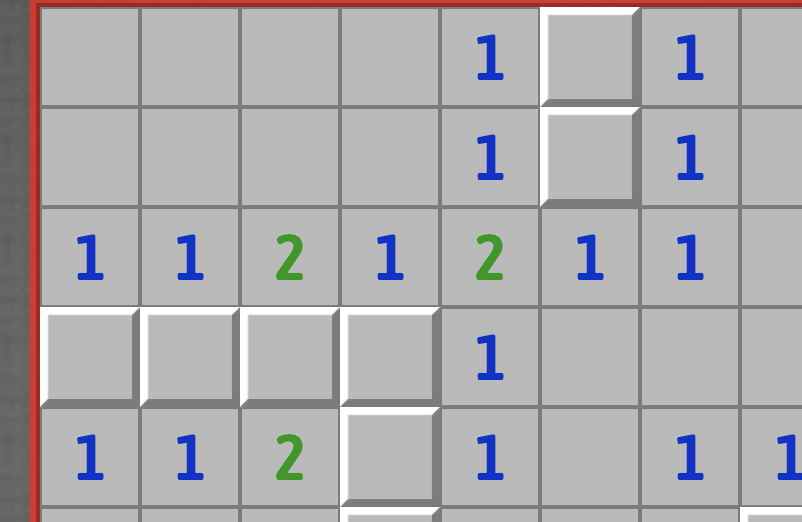
The green 2 near the center of only touches two boxes that haven’t been opened. So, we can plant flags on both of those. This subsequently allows us to dig the box in row 1 as a result of the blue 1s already touching a box.
Similarly, the two 1s adjacent to the flag that touches the three green 2s can allow us to dig two further boxes. This subsequently allows us to click the box in the first column while planting a flag in row 2.
This means we have quickly finished the section to leave it looking like this:
With tactics like this, you’ll be able to beat the game time and time again.
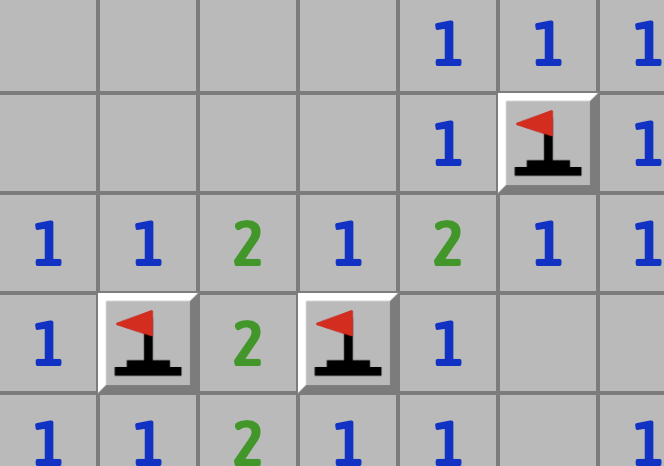
How to Become a Better Minesweeper Player In one word: practice.
Player In one word: practice.
Minesweeper is a game where a little luck can be useful at the start of a game. While the game is programmed to ensure that the first click doesn't hit a mine, the minefield could look vastly different after one click depending on which square you ‘dig’. For the most part, though, it is a game of skill where logical thinking and strategy can help you avoid mines and identify their locations far sooner.
There is a reason why someone who clicks squares seemingly at random will lose more games than they win where whereas an experienced player who knows how to logically decipher how many mines are in a specific part of the board will complete more games with impressive times.
If you are a new player, our top five pieces of advice are;
- Start with the 9x9 game as it gives you a better chance of experiencing wins. It also means that the number squares tend to be between 1-4.
- Avoid stating from the corners or any of the squares that are on the borders of the minefield square.
- Do not worry about the timer. The key right now is to ensure that you win more games than you lose. Fast times will come with experience.
- Try to play the move that will give you the most help rather than the one that you notice first.
- Avoid mistake clicks because they are a bad habit, even when they do not land you on a mine.
Over time you will develop the ability to survey and clear sections within 2-3 clicks when it would have previously taken you 6-7. Likewise, you’ll start to recognize patterns that allow you to instantly identify which square is the mine when there are two or three possibilities.
Skills like this will subsequently allow you to speed through the game without restoring to guess clicks.
Given that Minesweeper is a game that heavily revolves around logic and problem-solving, playing other online puzzle games like Mahjong and Hearts may also help sharpen your skills.
Stat Playing Minesweeper Now
Now that you have learnt (or refamiliarized yourself with) how to play Minesweeper, the next step is to get playing. Whether it’s starting on the beginner levels, working your way up to expert, or seeing how you measure up against the world’s other players via a Daily Challenge, 247 Minesweeper is the perfect platform for all of your minesweeping adventures.
Objective
In this puzzle game, you must clear the Minesweeper board containing hidden mines, without detonating any of them. Use the number clues to help determine the number of neighboring mines in each section of the board.
Gameplay
In 247 Minesweeper, mines and flags resemble the classic Minesweeper icons of a naval mine and flag. Other 247 Minesweeper seasonal variations, however, feature different themed icons such as Spring’s bumble bee mine and flower flags.
Minesweeper cells have 3 distinct states — covered, uncovered, and flagged. A covered cell is displayed as a blank, clickable cell. Uncovered cells are exposed and unclickable. Flagged cells indicate a potential mine location and are marked by the player.
A player has only one life per game. The first click in any game cannot result in uncovering a mine. A standard click, or left click, will uncover a cell on the board. A right click will toggle flagging. Uncovered cells will either display a blank tile (which will also uncover all adjacent non-mined cells), or feature a number indicating how many mines are either adjacent and/or diagonally to it.
Clicking the Flagging Mode Button, below the game board, will toggle Flagging Mode on and off. When Flagging Mode is “off”, a red border will appear around the board. When Flagging Mode is “on”, a green border will appear around the board.
Clicking the Emoji Button, above the board, will begin a new game.
To win Minesweeper, a player must “explore” all non-mined cells. The player does not need to flag all mined cells to win.
Seasonal Minesweeper Games
More Games
Minesweeper News
Disclaimer
DISCLAIMER: The games on this website are using PLAY (fake) money. No payouts will be awarded, there are no "winnings", as all games represented by 247 Games LLC are free to play. Play strictly for fun.


































